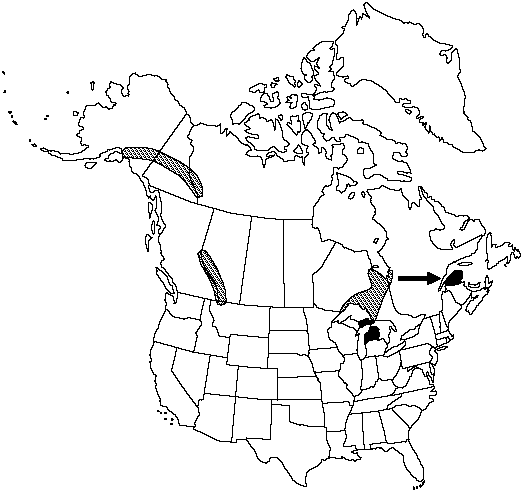Botrychium spathulatum
Amer. Fern J. 80: 77. 1990.
Trophophore stalk 0–1 mm; blade shiny yellow-green, narrowly deltate, flat, 1-pinnate, to 8 × 2.5 cm, thick, leathery. Pinnae to 8 pairs, ascending, remote, distance between 1st and 2d pinnae not or slightly more than between 2d and 3d pairs, basal pinna pair approximately equal in size and cutting to adjacent pair, mostly narrowly spatulate to linear-spatulate and rounded or ± 2-cleft, lobed to unlobed to tip, margins mainly entire or occasionally irregularly and shallowly incised, apex rounded-notched, venation like ribs of fan, midrib absent. Sporophores 1–2-pinnate, 1.2–2 times length of trophophore. 2n =180.
Phenology: Leaves appearing late spring through summer.
Habitat: Sand dunes, old fields, and grassy railroad sidings
Elevation: 0–2000 m
Distribution

Alta., B.C., N.B., N.W.T., Ont., P.E.I., Que., Yukon, Alaska, Mich., Mont.
Discussion
Botrychium spathulatum has long been confused with the more common B. minganense, with which it often grows in the Lake Superior region. The leaves appear later in B. spathulatum than in B. minganense.
Selected References
None.